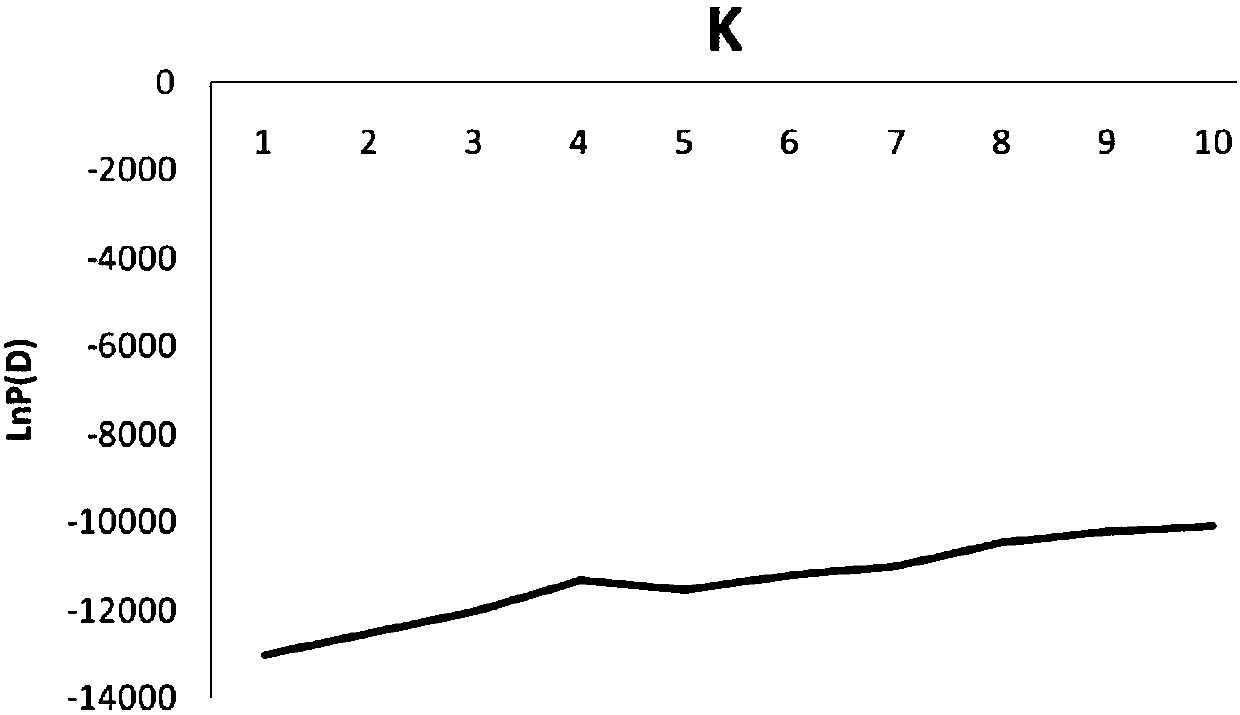Simple sequence repeat (SSR) molecular markers co-segregated with main-effect quantitative trait loci (QTL) for controlling flax plant height, and application of SSR molecular marker
A technology of molecular markers and co-segregation, applied in the field of molecular biology, can solve problems such as limitations and few genetic markers
- Summary
- Abstract
- Description
- Claims
- Application Information
AI Technical Summary
Problems solved by technology
Method used
Image
Examples
Embodiment 1
[0050] Example 1 Acquisition of SSR molecular markers co-segregated with high main-effect QTL in control flax strains 1 Materials and methods
[0051] 1 material
[0052] Table 2 124 flax core collections
[0053]
[0054]
[0055] 1.2 Method
[0056] 1.2.1 Basic statistical analysis of plant height traits
[0057] Flax was planted in the Xiangyun Experimental Field of Yunnan Province in 2011 and 2012 respectively. Random block design was adopted, and each resource was planted at 4m 2 In the plot, 20 plants were randomly surveyed in each plot for each resource. The plant height of flax was investigated, and the survey method was collected and sorted according to the "Specifications and Data Standards for the Description and Data Standards of Flax Germplasm Resources" (Wang Yufu et al., 2006).
[0058] The data of plant height traits of 124 flax core germplasms were imported into SPSS18.0 software for descriptive statistical analysis, and the maximum, minimum, average...
PUM
 Login to View More
Login to View More Abstract
Description
Claims
Application Information
 Login to View More
Login to View More - R&D Engineer
- R&D Manager
- IP Professional
- Industry Leading Data Capabilities
- Powerful AI technology
- Patent DNA Extraction
Browse by: Latest US Patents, China's latest patents, Technical Efficacy Thesaurus, Application Domain, Technology Topic, Popular Technical Reports.
© 2024 PatSnap. All rights reserved.Legal|Privacy policy|Modern Slavery Act Transparency Statement|Sitemap|About US| Contact US: help@patsnap.com










